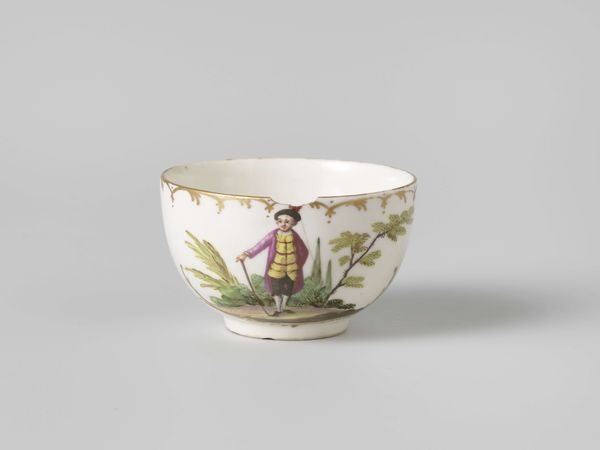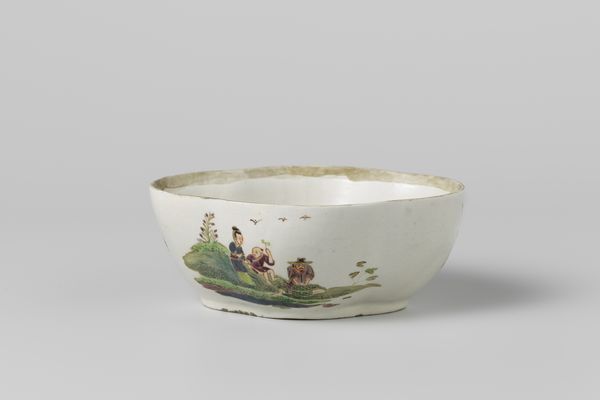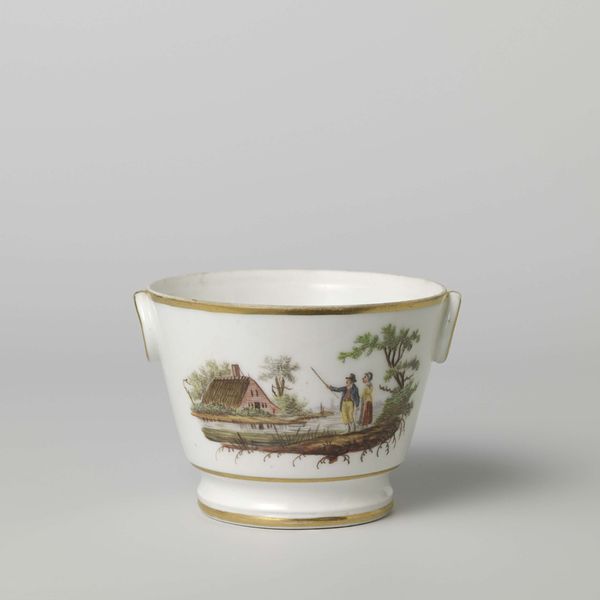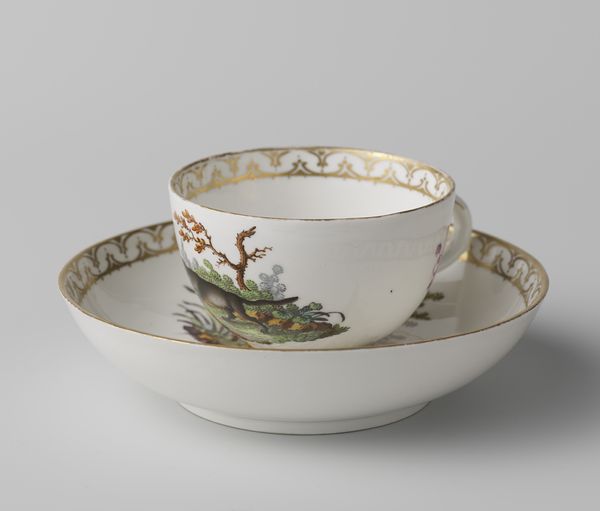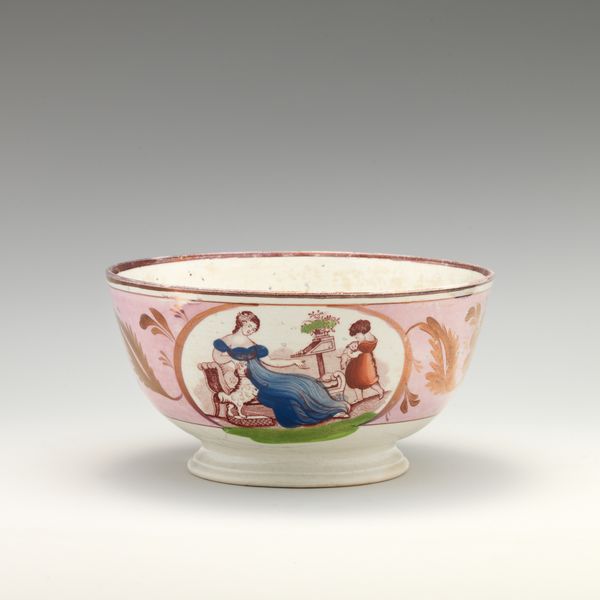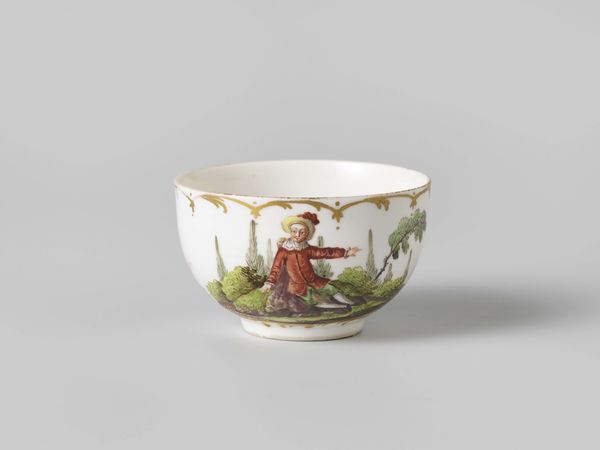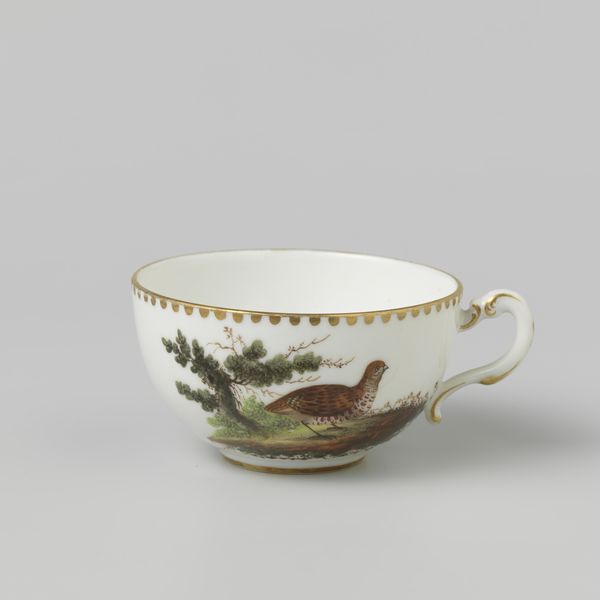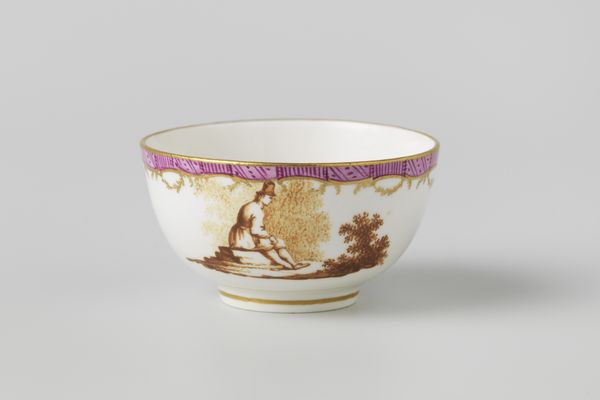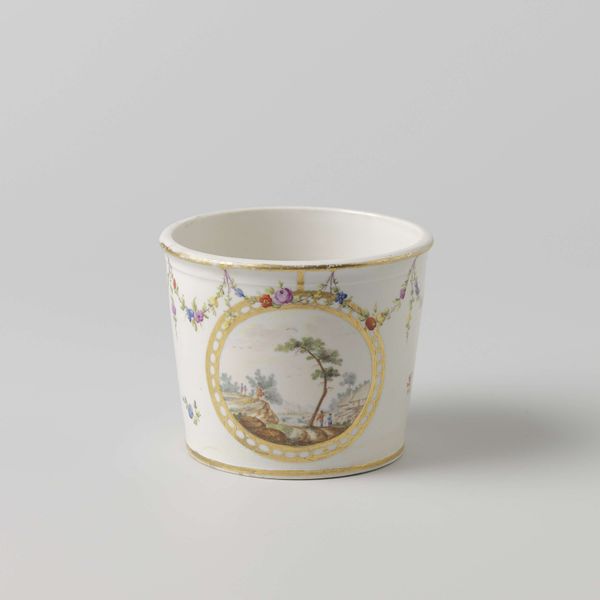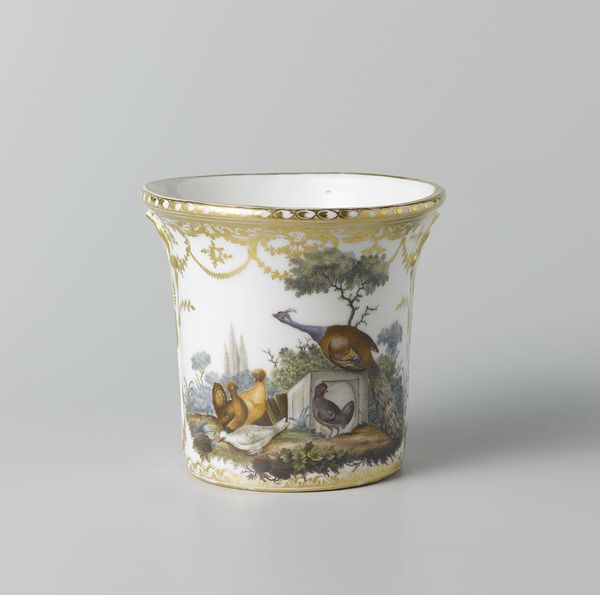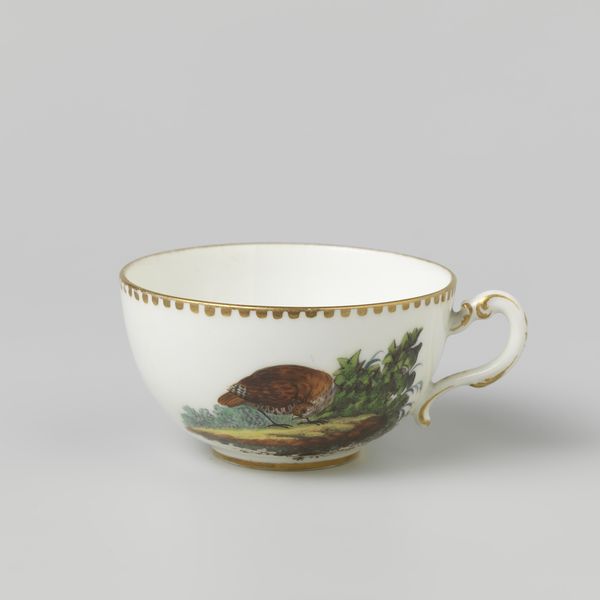
Kop, veelkleurig beschilderd met een man in een landschap c. 1759 - 1771
0:00
0:00
painting, porcelain
#
painting
#
landscape
#
porcelain
#
genre-painting
#
miniature
#
rococo
Dimensions: height 4.2 cm, diameter 6.5 cm
Copyright: Rijks Museum: Open Domain
Curator: What strikes me immediately is the sense of miniaturization here. The cup, painted in the Rococo style, features this tiny man in repose within a landscape. Editor: Indeed. This porcelain cup, created sometime between 1759 and 1771 by the Weesper porcelain factory, shows exactly that interest in intimacy and the everyday. Curator: There's a delicate balance. It’s so small; it's as if the scene painted on this cup contains a whole world within a teacup, where the quietude and introspection of the landscape meet the function of an everyday object. Isn't it extraordinary how everyday items suddenly had this capacity for transporting the user? Editor: That’s where the genius of these porcelain workshops lay; their understanding of social values. Notice how the depicted landscape adheres to certain idealized themes that were popular with a wealthy, bourgeois public. This cup is not merely decorative; it subtly reinforces social standing through artistry and cultured leisure. Curator: It makes me consider this cup as something more than just a receptacle. It’s like holding a whisper of a dream in your hands. The level of detail on something so small! Each brushstroke seemingly deliberate, crafting a serene little world. Editor: That craftsmanship served a very particular end. Mass consumption of luxury goods became a vehicle for solidifying class identity. Each piece subtly announces the refinement of the owner. Even the act of holding or gifting such a cup contributed to social maneuvering and visibility. Curator: A world in a cup. You know, the thought of holding such a small dream in my hand is kind of comforting. A tiny world that perhaps allows us to escape a reality we no longer know. Editor: A comforting thought, indeed. It’s easy to overlook the intricate workings of porcelain production, the market mechanisms that upheld those factories. But the artwork is the surviving product of human needs and a network of power dynamics and craft.
Comments
No comments
Be the first to comment and join the conversation on the ultimate creative platform.
